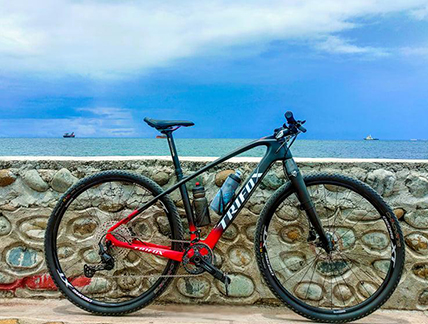
Mountain biking enthusiasts know the thrill of hitting the trails with a bike that combines performance, durability, and style. However, finding a high-quality carbon mountain bike at an affordable price—and without long shipping delays—can feel like an impossible dream. Enter the Trifox M2 29er Carbon Hardtail MTB, a game-changing bike that delivers professional-grade features for under $1,000 and ships directly from the USA. No more waiting months for international deliveries or breaking the bank to get your hands on a premium ride. Why the Trifox M2 Stands Out The Trifox M2 is designed for riders who demand excellence without compromise. Its lightweight carbon fiber frame offers superior strength and agility, making it ideal for tackling rugged trails and challenging terrains. As a 29er hardtail mountain bike, it provides excellent roll-over capabilities and stability, ensuring a smooth and controlled ride. Whether you’re a beginner or a seasoned rider, the M2’s balanced geometry and responsive handling will elevate your biking experience. Key Features and Performance 1. Carbon Fiber Frame: The heart of the M2 is its full carbon frame, which reduces weight while maximizing durability and shock absorption. This means you can push your limits without worrying about frame fatigue or damage. 2. 29-Inch Wheels: These larger wheels offer better traction and efficiency, especially on technical trails. They help you maintain momentum and navigate obstacles with ease. 3. Professional Components: Despite its budget-friendly price, the M2 doesn’t cut corners on components. It includes a reliable Shimano drivetrain, hydraulic disc brakes for precise stopping power, and a smooth suspension fork. 4. Versatility: The bike is suited for a variety of disciplines, including cross-country, trail riding, and even light racing. Its adaptable design lets you customize it as your skills progress. Its direct-to-consumer model eliminates middlemen costs, making high-end features accessible at an unbeatable price. Plus, with warehouses in the USA, shipping is fast and reliable—no more impatient waits for overseas shipments. Ideal for Trail Enthusiasts and Value Seekers The Trifox M2 is perfect for riders who want to invest in a quality bike without the premium price tag. It’s also an excellent choice for those upgrading from entry-level models or looking for a secondary bike for frequent use. With its sleek design and robust performance, it’s built to impress on and off the trails. Conclusion: Your Dream Bike Awaits The Trifox M2 29er Carbon Hardtail MTB proves that you don’t have to sacrifice quality for affordability—or wait months for delivery. For under $1,000, you get a carbon-framed, component-packed mountain bike that ships quickly from the USA. Ready to build your dream bike without the wait? Explore the Trifox M2 today and hit the trails with confidence! Shop the Trifox M2 now and transform your riding experience.
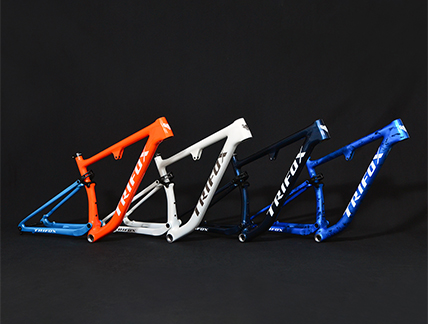
Embarking on the journey to build your dream cross-country (XC) mountain bike is an exciting endeavor. At the heart of this project lies the most critical decision: selecting the perfect frame. A 29er XC full suspension carbon frame represents the ultimate fusion of speed, efficiency, and control, designed to conquer demanding trails while remaining lightweight and responsive. But with a myriad of options available, how do you ensure you're making the right choice? This comprehensive guide will walk you through the essential factors to consider, using the exemplary TRIFOX Trail II Pro Full Suspension Carbon MTB Frame as a benchmark for what a top-tier frame should offer. 1. Geometry: The Blueprint of Performance The geometry of a frame is the DNA of your bike's handling characteristics. For modern XC and downcountry riding, the goal is a blend of aggressive climbing efficiency and confident descending stability. Head Tube Angle (HTA): A slacker HTA boosts stability on technical descents. The TRIFOX Trail II Pro features a 67.5-degree head angle, which is progressive for an XC frame, providing increased confidence when the trail turns downward. Seat Tube Angle (STA): A steeper STA positions the rider optimally over the bottom bracket, enhancing climbing efficiency and power transfer. The Trail II Pro's 75.5-degree seat angle ensures you can tackle steep climbs effectively. Reach and Stack: These measurements define your cockpit space and riding posture. Modern geometries tend toward longer reach and lower stack for improved stability and a more aerodynamic riding position. Why it matters: The right geometry ensures the bike feels intuitive and responsive. The Trail II Pro's geometry strikes a perfect balance, making it adept at both winning races and tackling technical trail features. 2. Suspension Design: The Heart of the Ride A full-suspension XC bike must offer traction and comfort without compromising pedaling efficiency. The design of the suspension linkage is paramount. Linkage Type: The TRIFOX Trail II Pro employs a highly efficient four-bar suspension system. This design is renowned for its ability to minimize pedal bob, ensuring that your energy is directed into forward momentum rather than being absorbed by the suspension. Travel: For XC purposes, 35-45mm of rear travel is the gold standard. It provides sufficient absorption for rough terrain and maintains grip without sacrificing the snappy, efficient feel essential for climbing and acceleration. The Trail II Pro is designed around this ideal 35-45mm of travel. Anti-Squat and Kinematics: Advanced suspension kinematics with high anti-squat values keep the frame taut under power, translating to efficient pedaling—a non-negotiable trait for any serious XC frame. 3. Carbon Fiber Quality: Where Engineering Meets Art The grade and construction of the carbon fiber directly influence weight, stiffness, compliance, and overall durability. Carbon Grade: Look for frames utilizing high-modulus carbon fibers. The TRIFOX Trail II Pro is crafted from T800 carbon fiber, a premium material that allows for an exceptional strength-to-weight ratio. This results in a frame that is both incredibly light and impressively robust. Layup Process: The artistry of carbon frame building lies in the layup. Precision hand-laying allows engineers to tailor the flexibility and stiffness in specific areas. The down tube and bottom bracket can be reinforced for stiffness and power transfer, while the seat stays can be designed to offer vertical compliance, smoothing out trail vibrations. Why it matters: A high-quality carbon frame like the Trail II Pro delivers a ride quality that is stiff and responsive when you stamp on the pedals yet surprisingly comfortable over long, rugged distances. 4. Modern Features and Compatibility: Future-Proofing Your Investment A modern frame must adhere to current component standards to ensure compatibility and ease of upgrades. Dropper Post Compatibility: The ability to run a dropper post is essential for modern trail riding. The Trail II Pro features internal routing for a 30.9mm dropper post, allowing for a clean setup and confident descending. Boost Spacing: The frame boasts 148x12mm Boost rear spacing and 110x15mm front spacing. This standard increases wheel stiffness, improves tire clearance, and enhances overall handling precision. Threaded Bottom Bracket: A BSA threaded bottom bracket is a signature feature of a well-thought-out frame. It is renowned for its reliability, ease of maintenance, and resistance to creaking—a common issue with press-fit systems. Internal Cable Routing: Full internal routing for derailleur and dropper posts not only creates a sleek, aesthetic look but also protects the cables from dirt and damage. 5. Weight and Value Proposition The pursuit of lightness is central to XC. The TRIFOX Trail II Pro frame weighs approximately 1272g-1336g, placing it firmly in the competitive range for high-performance carbon frames. When evaluating price, consider the value offered by direct-to-consumer brands like TRIFOX, which provide cutting-edge technology and materials at a fraction of the cost of many major brands. Conclusion: The TRIFOX Trail II Pro – A Paradigm of Intelligent DesignSelecting the perfect frame is a process of matching your riding ambitions with engineering excellence. By focusing on geometry, suspension design, carbon quality, and modern features, you can make an informed decision that will define your ride for years to come. The TRIFOX Trail II Pro 29er XC Full Suspension Carbon Frame emerges as a standout option that exemplifies these principles: Its modern geometry inspires confidence across diverse terrain. The efficient four-bar suspension delivers traction without compromise. The T800 carbon construction offers a sublime blend of lightness and strength. Its future-proof features ensure compatibility with the best components on the market. By using this guide and the Trail II Pro as a reference, you are equipped to choose a frame that will form the foundation of an exceptional mountain bike, ready to push the limits of speed and performance.
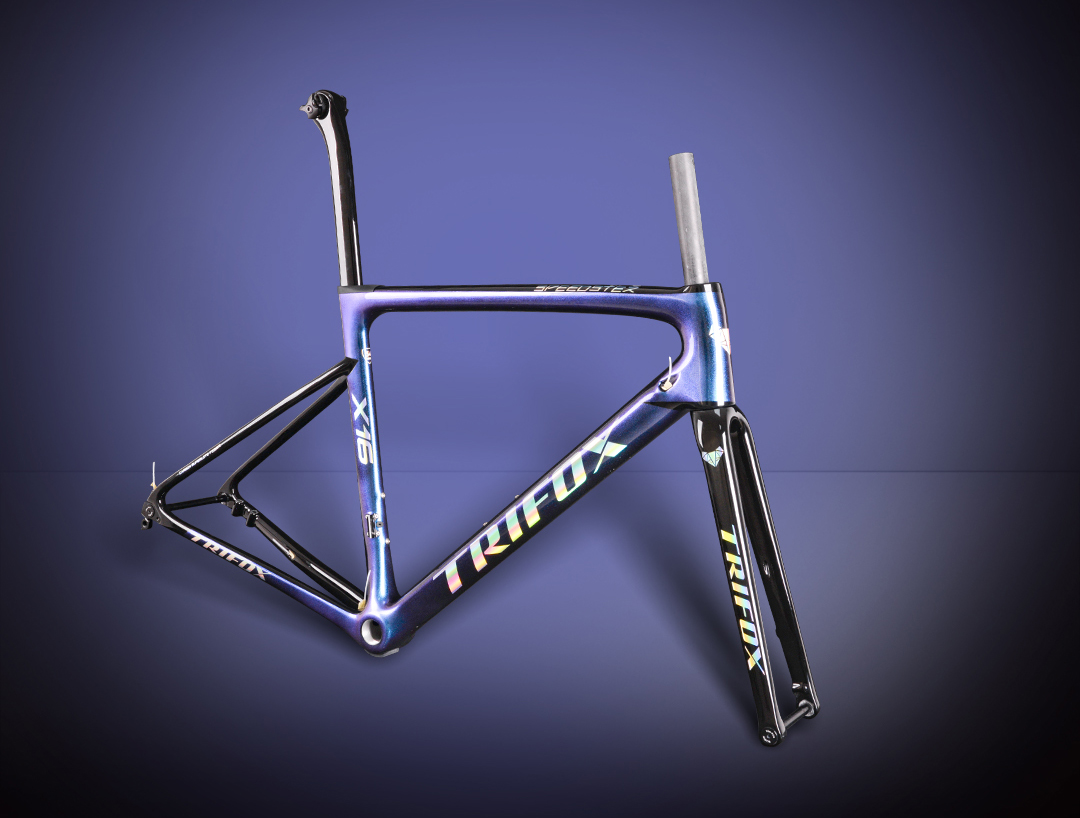
What makes a road bike frame truly popular? It's not just hype – it's the perfect blend of performance, value, and real-world usability. Trifox's X16 Disc Brake Carbon Frame consistently tops their charts, and for good reason. Let's dive into what makes this frame a standout choice for discerning riders: Uncompromising Lightweight Performance: Crafted from high-modulus T800 carbon fiber, the X16 boasts an impressive frame weight hovering around 900g (size dependent). This translates directly to snappier acceleration, effortless climbing, and a lively, responsive ride that feels eager under power. It's pure road buzz without the penalty. Disc Brake Dominance: Embracing the modern standard, the X16 features flat-mount disc brake compatibility. This means superior stopping power in all conditions – wet descents, tight corners, or emergency stops – offering consistent modulation and control that rim brakes simply can't match. Confidence is key to speed. Stiffness Meets Comfort: Trifox engineers didn't just chase grams. The X16 features a stiff front triangle (head tube, down tube, bottom bracket) for razor-sharp handling and efficient power transfer when you stomp on the pedals. Yet, the carefully shaped thin seatstays and fork provide crucial vertical compliance, absorbing road buzz and reducing fatigue on longer rides. You get race-ready feedback without the harshness. Modern, Versatile Geometry: The X16 strikes a brilliant balance. Its geometry leans towards aggressive (think shorter headtubes, longer reaches) for efficient power output and aerodynamic potential, yet remains accessible enough for spirited club rides and gran fondos. It’s a frame built for speed that doesn’t demand a pro-level contortion. Smart, Rider-Focused Design: Threaded Bottom Bracket (BB86): A massive win for reliability and home mechanics. No press-fit creaks here! Easy installation and long-term peace of mind. Full Internal Cable Routing: Creates a sleek, aerodynamic profile while protecting cables and hoses from the elements. Looks pro, functions flawlessly. Wide Compatibility: Accommodates electronic and mechanical groupsets, 28c+ tires (great for comfort/rough roads), and standard 27.2mm seatposts for tuning ride feel. Why the X16 Resonates: It delivers pro-level pedigree (lightweight carbon, advanced shaping, disc performance) at a direct-to-consumer price that makes high-performance cycling genuinely accessible. You're not paying for flashy marketing or dealer markups – just exceptional engineering focused on the ride. The Trifox X16 isn't just popular; it's popular for a reason. It masterfully combines the essential ingredients modern road riders crave: lightweight carbon efficiency, the confidence of disc brakes, a balanced blend of stiffness and comfort, and practical, reliable design – all wrapped up in a package offering outstanding value. If you're seeking a frame that punches far above its weight class and forms the foundation of a truly exciting road machine, the X16 is Trifox's testament to smart performance.
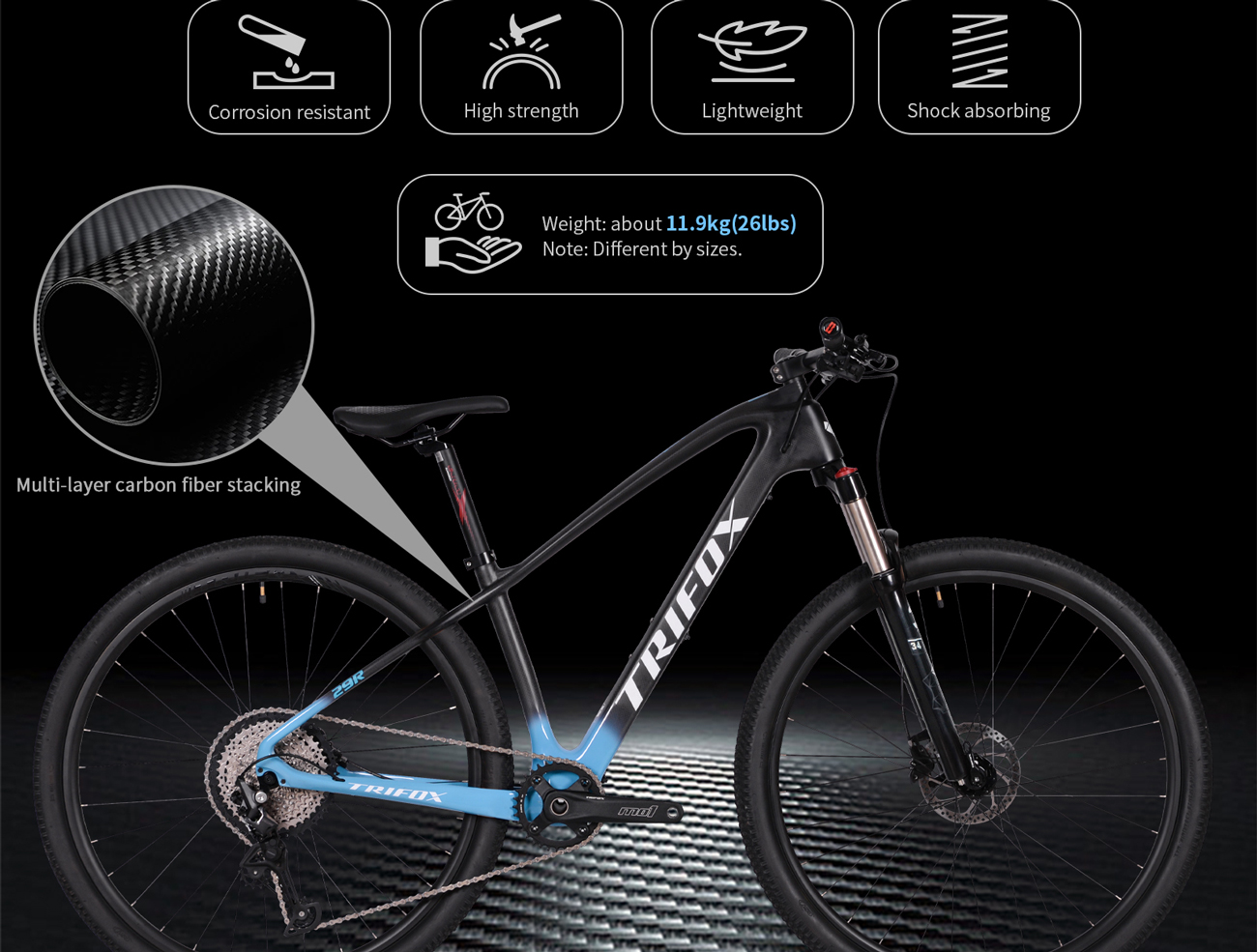
Think building a capable, lightweight hardtail requires breaking the bank? Think again. The sub-$250 frame market is hotter than ever, offering surprising performance for riders seeking value without sacrificing fun. We scrutinized options, and one standout shines: the Trifox MFM200 Carbon Hardtail Frame. Here’s why it’s a budget hero: The Carbon Game-Changer (Yes, at $227!) The MFM200 shatters expectations by delivering a full carbon fiber frame at an astonishing price point. Forget heavy steel or flexy aluminum – this frame offers the core benefits of carbon: Ultralight Build: Weighing in around 1200g (size dependent), it sheds serious pounds compared to alloy frames at this price. That translates directly to easier climbing and a livelier, more responsive feel on every trail. Stiffness for Speed: Carbon construction ensures excellent pedaling efficiency. Power transfer is direct, minimizing wasted energy when you stomp on the pedals, whether sprinting or grinding uphill. Tuned Trail Compliance: While stiff laterally, carbon can offer subtle vertical flex. The MFM200’s design helps absorb smaller bumps and chatter, reducing fatigue on longer rides and rough sections, making it more capable than its price suggests. Modern Geometry for Real Trails Trifox didn't skimp on contemporary design: Slack Head Tube Angle (~66-67°): Boosts confidence on descents, improving stability when things get steep or rough. Steep Seat Tube Angle (~74-75°): Positions you efficiently over the pedals for better climbing traction and comfort. Reach & Wheelbase: Balanced numbers provide a stable yet maneuverable ride suitable for aggressive trail riding and XC adventures. Smart Build Compatibility The MFM200 plays nice with widely available, affordable components: Boost Hub Spacing (148x12mm rear): Ensures stiffness and compatibility with modern wheelsets. Internal Cable Routing: Clean looks and protection for dropper posts and derailleurs. Tapered Headtube: Fits modern, stiff forks for precise steering. Threaded Bottom Bracket: A huge win for reliability and ease of maintenance – no creaky press-fits! Value Verdict: The Trifox MFM200 Finding a new carbon frame under $230 feels almost unreal. The Trifox MFM200 delivers the core advantages of carbon – significant weight savings, efficient power transfer, and surprisingly good trail manners – wrapped in modern, capable geometry. While you might find minor finish differences compared to premium frames, the fundamental performance is undeniable. Is it perfect? Consider: Finish: Expect functional over flawless – cosmetics might be simpler. Hardware: Bearings and bolts are adequate, but upgrading later is easy. Build Cost: Remember, the frame is just the start! Factor in fork, drivetrain, wheels, etc. The Bottom Line: For riders demanding a lightweight, efficient, and modern hardtail platform without blowing the budget, the Trifox MFM200 is a revelation. It proves you don't need $1000+ to get a frame that unlocks hardtail heroics. Pair it with smart component choices, and you’ve got a trail-taming machine that punches way above its weight class. Budget hardtails just leveled up!

Remember when carbon fiber was reserved for pro pelotons and deep-pocketed racers? Not anymore. Mountain biking is witnessing the unstoppable rise of carbon, transforming trails from XC loops to gnarly enduro descents. Brands like Trifox are making this once-exotic material accessible, proving carbon MTBs aren't just lighter – they're better riding machines. Here's why the shift is seismic: Featherweight Flight: This is the headline. Carbon frames slash pounds off alloy counterparts. Less weight means easier climbing, quicker acceleration, and less fatigue over long days. You carry the bike less; the bike carries you more. Trifox's carbon hardtails and full-suspension rigs exemplify this advantage, turning arduous ascents into achievable efforts. Stiffness Meets Sensation: Carbon isn't just light; it's incredibly tuneable. Engineers craft frames with targeted stiffness where it matters most: the bottom bracket for efficient pedaling, the head tube for precise steering. Yet, carbon's magic lies in its ability to also offer vertical compliance. It absorbs smaller trail chatter better than alloy, reducing arm and leg fatigue, letting you ride harder, longer. Strength You Can Trust: Forget the "fragile" myth. Modern carbon layups create structures incredibly resistant to impacts and fatigue. When designed correctly (like Trifox's robust mountain frames), carbon handles rock strikes, drops, and rough terrain with impressive resilience. It won't dent like aluminum and shrugs off corrosion. Ride Refined: The combination of lightness, stiffness, and subtle flex translates to a more connected, responsive, and lively feel. You feel the trail without being beaten by it. Carbon bikes track better through corners, feel more nimble in the air, and offer a directness that boosts confidence when pushing limits. Trifox: Bringing Carbon to the Trail Brands like Trifox are crucial to this rise. By leveraging efficient manufacturing and direct-to-consumer models, they deliver high-performance carbon mountain bikes at astonishingly competitive prices. Whether it's their agile carbon hardtails perfect for XC and trail blasting, or their capable full-suspension platforms, Trifox proves you don't need a pro contract to experience the carbon revolution. The Verdict: Not Just a Trend, The Future The rise of carbon fiber in mountain biking isn't just hype; it's a fundamental shift driven by tangible performance benefits. It offers a superior blend of weight, strength, stiffness, and ride quality that alloy struggles to match. As manufacturing advances and brands like Trifox make it more accessible, carbon is becoming the material of choice for riders seeking every advantage on the trail. It’s not about replacing alloy entirely, but about offering a compelling, high-performance option that’s redefining what’s possible on two wheels. Ready to feel the difference? Explore the carbon evolution: Discover Trifox Mountain Bikes.
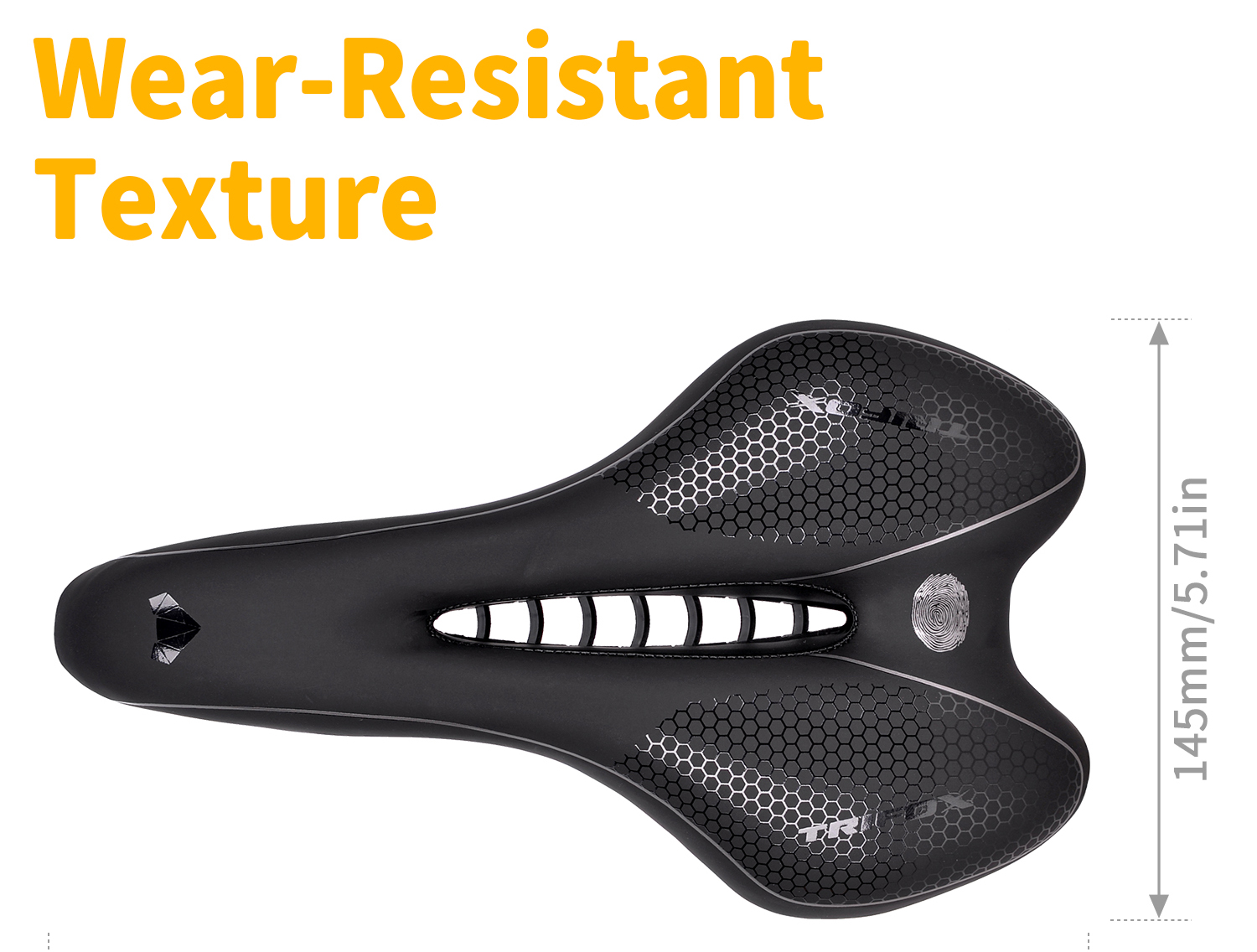
That stock saddle on your road bike? It served its purpose getting you started. But if you're chasing performance, comfort, or simply a more refined ride, upgrading to a full-carbon saddle like the Trifox CS200 is a game-changer. Forget the misconception that carbon is harsh – modern designs blend featherweight efficiency with surprising comfort. Here's why the switch is worth it: 1. The Weight Weenie Wins: This is the obvious one. At a claimed 120 grams, the Trifox CS200 utterly demolishes typical alloy-railed saddles (often 250g+). Shedding 100+ grams directly off your bike, especially high up and at the contact points, makes a tangible difference. It's pure acceleration, easier climbing, and the satisfaction of marginal gains realized. Every watt feels more efficient. 2. Stiffness = Power Transfer: Carbon fiber's inherent stiffness isn't just for weight savings. It means virtually zero flex under power. When you stomp on the pedals, every ounce of energy goes into propelling you forward, not lost compressing padding or flexing the shell. You'll feel a more direct, connected drive, especially during sprints and out-of-the-saddle efforts. 3. Engineered Comfort (Yes, Really!): "Carbon must be hard!" is the biggest myth. Saddles like the CS200 use carefully sculpted shapes, strategic flex zones in the carbon base, and minimal high-density padding precisely where needed. This provides targeted support to your sit bones, reducing pressure on soft tissue. Less padding can actually mean less numbness on long rides, as your weight is correctly distributed. The shape is key, and many find carbon shells conform better over time. 4. Breathability Matters: Ever finished a long ride feeling swampy? Full-carbon bases are inherently perforated or designed with significant cutouts/channels (like the CS200). This promotes airflow, drastically reducing heat and moisture buildup. Enhanced ventilation equals greater comfort and reduced friction, ride after ride. 5. Durability & Low Maintenance: Carbon fiber is incredibly resilient to fatigue and corrosion. Unlike leather or synthetic covers that can degrade, or rails that can rust, a quality carbon saddle shrugs off sweat, weather, and miles. It requires minimal upkeep beyond wiping clean. The Trifox CS200: A Prime Example The Trifox CS200 exemplifies these benefits perfectly: - Ultralight 120g: Significant weight savings. - Full Carbon Shell & Rails: Maximizes stiffness and durability while minimizing weight. - Strategic Padding: Minimal, high-rebound foam for targeted comfort without bulk. - Central Cutout: Enhances breathability and relieves perineal pressure. - Aerodynamic Shape: Sleek design complements a performance road bike. Is it for Everyone? Like any saddle, fit is paramount. A carbon saddle's shape needs to match your anatomy. If the stock shape works for you, upgrading to carbon refines it. If not, focus on finding the right shape first, then consider carbon for the performance benefits. The Trifox CS200 offers a popular, performance-oriented profile. The Upgrade Verdict: Upgrading to a carbon saddle isn't just about shaving grams; it's about enhancing the fundamental connection between you and your bike. The blend of dramatic weight reduction, efficient power transfer, surprising comfort through intelligent design, and superior breathability creates a noticeably better riding experience. If you're ready to feel more connected, efficient, and comfortable, especially on demanding rides, a saddle like the Trifox CS200 is a worthy investment. It transforms a crucial contact point from a necessary component into a performance asset. Make the switch and feel the difference!
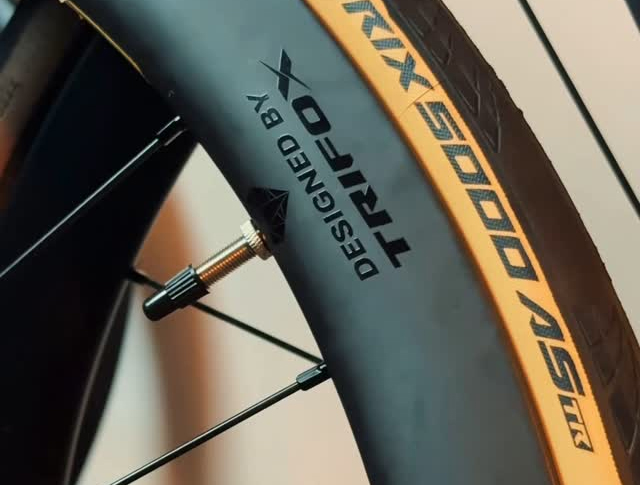
Forget "just" improved stopping power – switching to a dedicated disc brake wheelset unlocks a cascade of performance benefits that fundamentally elevate your road riding. It's not an incremental upgrade; it's a transformation in control, confidence, and capability. Why Disc Wheelsets Rule the Road: 1. Unshakeable Confidence, Anywhere, Anytime: Rim brakes falter in wet grit or on long, steep descents. Discs deliver consistent, powerful, and modulated braking performance regardless of weather, road grime, or gradient. This translates directly to riding faster with more control when it matters most. 2. Aerodynamic & Structural Advantages: Free from the need for a braking surface, disc wheelsets allow for wider, deeper, and more aerodynamically optimized rim profiles. This reduces drag for free speed. The rim itself is also stronger without the wear surface, enabling lighter constructions and improved impact resistance. 3. Tubeless Paradise: Disc wheelsets are the perfect partners for tubeless tires. Wider rims create a better tire profile for lower rolling resistance, enhanced grip, and the holy grail: fewer flats at lower pressures. No more worrying about brake track wear from heat during hard descents either. 4. Future-Proof Performance: The industry standard is clear. Disc brakes dominate new road bikes. Investing in a quality disc wheelset ensures compatibility with the latest frames and groupsets, protecting your upgrade path. The Trifox WT11: Performance Engineered for Disc: The WT11 Disc Brake Centerlock Clincher Carbon Wheelset embodies these advantages: - Lightweight Carbon Construction: Prioritizes acceleration and climbing response. - Optimized Aero Depth: Balances speed and crosswind stability. - Wider Rim Profile: Enhances tire performance and supports tubeless setups seamlessly (valves included!). - Reliable Centerlock Interface: Ensures secure rotor mounting and easier maintenance. - Stiffness & Durability: Engineered for powerful sprints and demanding riding. Who Wins with Disc Wheels? - All-Weather Warriors: Ride confidently rain or shine. - Descenders & Climbers: Brake later, descend faster, climb without rim heat worries. - Speed Seekers: Leverage superior aero and tubeless efficiency. - Tech Adopters: Invest in the modern standard. Ready for Uncompromised Control & Speed? Upgrade your stopping power, unlock aerodynamic gains, embrace tubeless simplicity, and future-proof your ride. Disc wheelsets aren't just better brakes; they're the foundation for a faster, safer, and more enjoyable road experience.
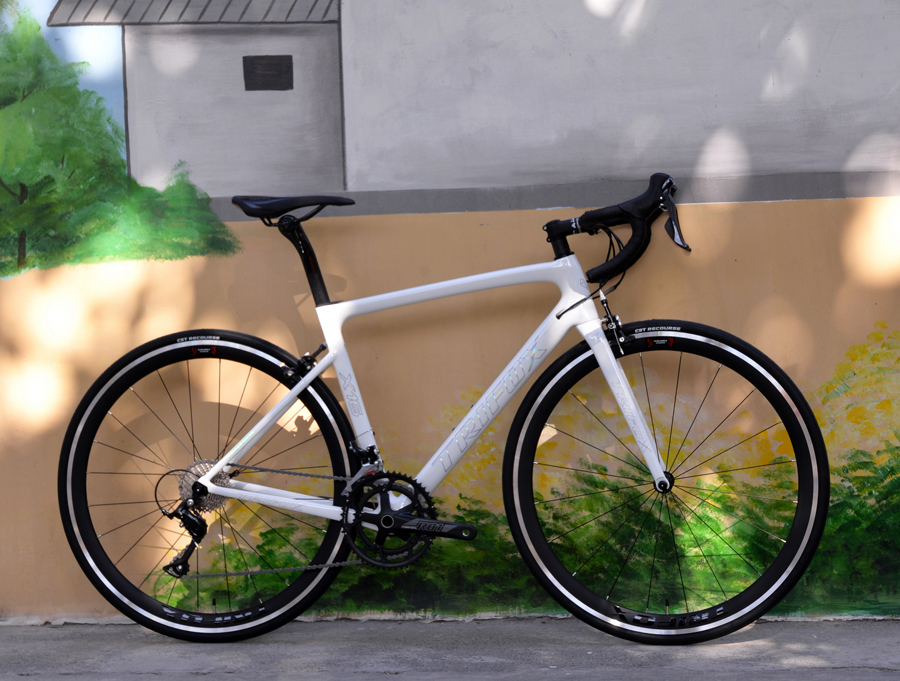
Imagine slicing through headwinds, floating up climbs, and feeling every pedal stroke ignite instant acceleration. This isn’t fantasy—it’s the reality of riding an ultra-light road bike. When your entire machine weighs less than a weekend grocery haul, every aspect of cycling transforms from effort to exhilaration. Why Ultra-Light Matters: 1. Climbs Become Conquests: Shedding weight is the ultimate climbing hack. A lighter frame demands less energy to defy gravity, turning grueling ascents into rhythmic, rewarding efforts. You’ll crest hills faster—and smile wider. 2. Explosive Acceleration: Stop-and-go traffic? Sprint segments? Ultra-light bikes leap forward with minimal input. The reduced mass means near-instant response to power, making surges feel effortless and races decisive. 3. Agile Handling: Cornering tight descents or navigating technical routes becomes intuitive. A featherweight frame dances beneath you, offering surgical precision and confidence at high speeds. 4. Endurance Boost: Less weight = less fatigue. Ride longer, push harder, and finish strong without the dead-legged feeling of hauling excess mass. The Trifox Difference: The 700c Carbon Fiber Ultra-Light Road Bicycle isn't just light—it's intelligently engineered. Its monocoque carbon frame blends minimal weight with optimized stiffness, ensuring zero power loss on sprints or climbs. Paired with aerodynamic tube shaping and compatibility with high-end components, it delivers pro-level performance without the pro-level price. Who It's For: Climbers: Conquer grades you once walked. Racers: Gain seconds where they matter most. Endurance Riders: Cover miles with leftover energy. Upgraders: Feel your first true "race bike" epiphany. Ready to Redefine Your Limits? An ultra-light bike isn't an upgrade—it's a revelation. The Trifox 700C rewrites your relationship with the road, turning struggle into flow and effort into euphoria.
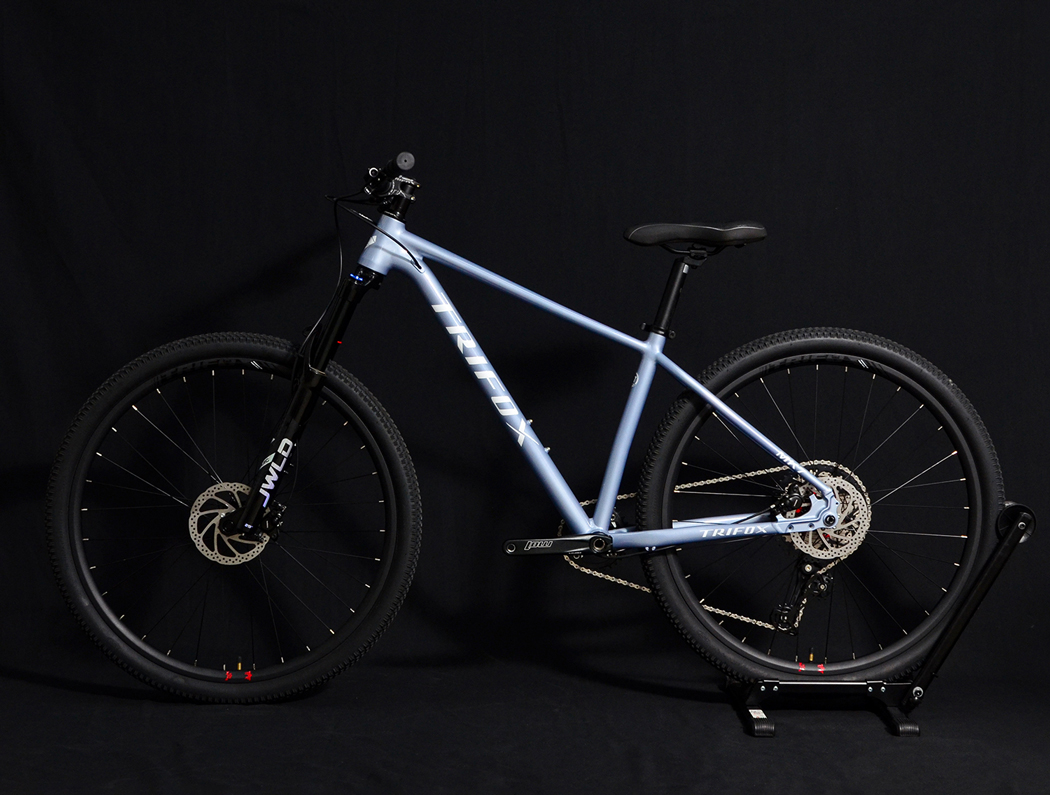
In an era of complex full-suspension rigs, the aluminium hardtail mountain bike holds a special, enduring appeal. It’s not about nostalgia; it’s about a distinct, exhilarating riding experience defined by purity, efficiency, and a direct connection to the trail that modern aluminium frames elevate perfectly. Why Choose the Aluminium Hardtail? - Unbeatable Efficiency: Every watt of your pedal power translates directly into forward motion. Aluminium frames offer fantastic stiffness, ensuring minimal energy loss. You feel faster, especially on climbs and flowing singletrack where acceleration is key. - Trail Telepathy: Without rear suspension, you feel every root, rock, and contour. This direct feedback sharpens your skills, improves your line choice, and creates an incredibly immersive, connected ride. You learn to flow with the trail, not just float over it. - Lively & Playful: Modern aluminium frames are surprisingly compliant, offering a lively, responsive feel. The hardtail design encourages popping off features, manualing, and flicking the bike around with agility – pure, unadulterated fun. - Robust & Reliable: Aluminium is tough. It shrugs off rock strikes and minor crashes. Combine that with the inherent simplicity of a hardtail (fewer pivots, less maintenance), and you have a bike built for relentless trail duty and adventure, season after season. - Incredible Value: You get serious performance and durability without the high cost and maintenance of rear suspension. This frees up budget for higher-quality components elsewhere. The Modern Aluminium Hardtail: Evolved & Capable The Trifox PeakTrail Xtreme MK7 exemplifies this allure. It’s not your grandad's rigid bike. Featuring: - A lightweight, hydroformed aluminium frame with optimized tubing for strength and ride quality. - Aggressive, modern geometry for confident descending and stability at speed. - Premium suspension fork (like the Suntour Raidon) to smooth out the front end. - High-performance drivetrain (Shimano SLX/XT) and powerful disc brakes for precise control. Who Thrives on a Hardtail? - Skill Builders: Learn proper technique and become a better rider. - XC & Trail Racers: Maximize speed and efficiency. - Value Seekers: Get top-tier performance without breaking the bank. - Adventure Riders: Dependable, low-maintenance exploration machines. - Riders Craving Connection: Those who want to truly feel the trail beneath them. Ready to Embrace the Purity? Experience the direct thrill and undeniable efficiency of a modern aluminium hardtail. The Trifox PeakTrail Xtreme MK7 delivers the perfect blend of performance, durability, and pure trail feedback. Rediscover why the hardtail remains a cornerstone of mountain biking.

















